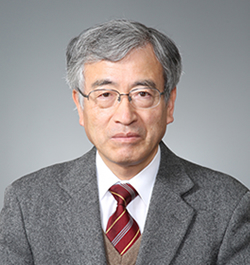Umami is a basic taste felt when the umami substances sodium glutamate, sodium inosinate, and sodium guanylate stimulate the taste buds. All of these umami substances were discovered by Japanese people. Dr. Kikunae Ikeda discovered sodium glutamate in kelp in 1908. In 1913, Shintaro Kodama discovered sodium inosinate in bonito flakes, and in 1957, Dr. Akira Kuninaka discovered sodium guanylate in dried shiitake mushrooms. Japanese people have also long used these ingredients to prepare delicious food.
Glutamate is found in a variety of foods around the world, including tomatoes and other vegetables, fermented foods such as cheese, miso, soy sauce, and fish sauce, inosinate in meat and fish, and guanylate in dried mushrooms and vegetables, but for a long time the existence of the taste known as umami caused by umami substances went unnoticed in the West. In the 1980s, physiological researchers around the world began to research the physiological effects of umami substances, which led to increased interest in umami substances around the world, and in 2002, the existence of umami receptors in the human tongue was discovered, finally bringing worldwide recognition that umami is the fifth basic taste.
Furthermore, in December 2013, "Washoku: Traditional Japanese Food Culture" was registered as an Intangible Cultural Heritage by UNESCO, and one of its features is that it allows for a diet low in animal fats through the skillful use of ingredients containing umami substances. With the rise in health consciousness, washoku has now attracted attention from all over the world, and umami has become an international term, attracting great interest from people in various fields related to food, such as taste researchers, nutritionists, food journalists, and chefs from around the world, and umami is also often featured in Western media and on the Internet.
However, there are still many things that are not fully understood about umami substances and the "umami" that we feel from them, and there is new useful information. For example, in Japan, there are two ways to write "umami" ("うま味(umami)" and "旨味 (delicious)"), but these are homonyms with different meanings. It has also been discovered that umami substances act as enhancers of "richness(Koku)," one of the objective sensations that make up deliciousness. Because various flavors are mixed together in food and because the taste of umami substances themselves is light and subtle, it is very difficult for us to sense this as "umami," but it has been discovered that this plays a major role in bringing out the deliciousness of food.
The Umami Information Center is engaged in outreach and awareness-raising activities to deepen understanding of umami through events such as umami lectures and symposiums both in Japan and overseas, and disseminating information through websites and the publication of books and pamphlets, etc. In the future, in addition to the important functions of umami substances that have been explained so far, we would like to disseminate new functions in an easy-to-understand manner and spread correct knowledge about umami.




